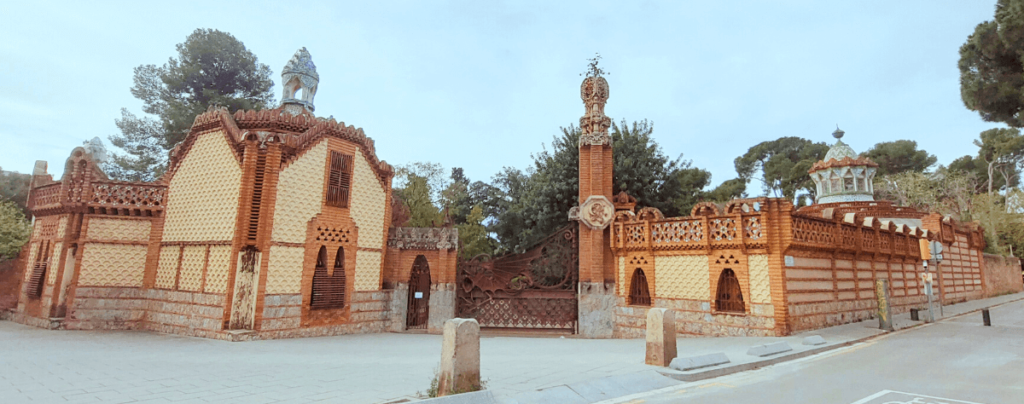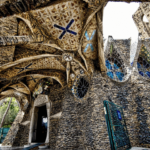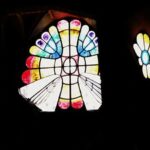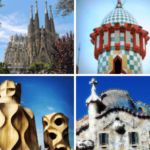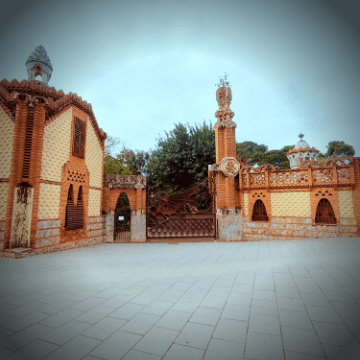
Everything about the Pavellons de la Finca Guell in Barcelona
ANTONI GAUDI AND THE GUELL PAVILIONS
The district of Pedralbes is an area of Barcelona (Spain) that many visitors miss. Of course: there’s so much to do and see just with Antoni Gaudi’s Masterpieces and the old quarters! But people who have enough days in town or repeat visitors that want to see new things will be right to go off the beaten path. Pedralbes features some lovely hidden gems: a medieval monastery, a rose garden, a Royal Palace and… Gaudi’s Finca Guell with its pavilions (“pavellons” in Catalan or “pabellones” in Spanish).
History of the Pavellons Guell
1
Eusebi Guell, Gaudí and Mossen Cinto Verdaguer
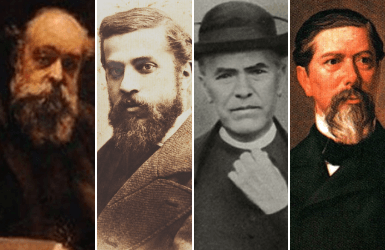
Eusebi Guell was an aristocrat and wealthy businessmen that owned factories, wine cellars, quarries... He was considered to be the second richest person in his time, after his father in law, Antonio Lopez, Marquis of Comillas. Antoni Gaudi and Eusebi Guell had met in Paris when the architect was young. He had won a design prize in a competition where he presented a piece of furniture to display gloves in a specialty shop.
They soon became best friends, and the Count Guell would be one of Gaudi’s most important patrons. Park Guell is definitely the most famous of the works they envisioned together, but not the only one. The Guell pavilions in Barcelona are another example, actually the first joined project. After that would come Palau Guell, the Crypt of the Guell Colony, the Guell Cellars in Garraf, the Catllaras shelter for mine engineers…
Mossen “Cinto” Verdaguer (Jacint Verdaguer) was a prestigious Catalan priest and poet. He was the private priest of the Lopez family, and through them he met Eusebi Guell. When Verdaguer contracted tuberculosis, the Marquis allowed him to travel in the steam ships of his property so the fresh air of the sea would help him heal. During those trips Verdaguer wrote his own version of myth of The Atlantis (Hercules adventures), and he dedicated the book to Antonio Lopez, in recognition for having let him travel in his steam ships.
In 1883 Guell purchased a property in the outskirts of Barcelona (it wouldn’t become part of the city until the annexion of Sarria in 1921). His father in law having died recently, he decided to pay a tribute to him. He asked Gaudi to build an entrance gate inspired in Verdaguer’s Atlantis.
2
Recent history of the Finca Guell pavilions
In 1958 another section of the property that included the Pavellons Guell by Gaudi was purchased to build a University Campus. Then in 1969 the Guell pavilions and the dragon gate were declared monument of historical and artistic interested, and were restored.
In 1977 the gatekeeper lodge became accommodation for the university staff, while the horse stables became the seat of the Catedra Gaudi, an institution specializing in Gaudi studies. Then in 2015 the University of Barcelona signed an agreement with the City Council to transfer the Finca Guell pavilions to the Municipal Institute of Urban Landscape for 10 years in exchange of their restoration.
Description of the Guell Pavilions
3
Gatekeepers lodge
4
Stables
This pavilion is divided in 2 bodies. The first is the actual stables, of rectangular base and an undulated flat brick roof based on catenarian arches. The second body is the lungeing ring, featuring a squared floor plan and a hyperboloid dome. With some imagination, the shape of the building seen from the street might look like an old steam boat, with the column of the orange tree being the smoke pipe.
5
Dragon Gate
If you pay attention, you’ll see that over the body of the dragon there’s a few metal stars: the legend says that the dead dragon was transformed by the Gods in a constellation. Here it’s the stars that can be seen in the sky of Barcelona in spring: Draco, Hercules, the Polar Star, the Little Bear, the Pleiades and Lyra. Also, the dragon is chained to the medallion with the G of Guell: it’s giving us the message that here it’s the Count Guell who rules.
Plan your visit to La Finca Guell
6
How to get to Pavellons Guell (Barcelona, Spain)
TELEFON: +34 933177652
CLOSEST SUBWAY STATIONS: Maria Cristina and Palau Reial, both on L3 (green line)
CLOSEST TRAM STOP: Pius XII
CLOSEST TOURIST BUS STOP: Palau Reial - Pavellons Guell
Alternatively, there’s a bus stop accross the street where stop the lines 63 (from Plaça Universitat), 78 (Sants Station) and V5 (Port Vell, Via Laietana and Passeig de Gracia).
7
Visit tips
The dragon gate and the outside of Pavellons Guell can be easily seen from the street and still offers great photo opportunities. But if you prefer, there’s the possibility to visit the modernist enclosure (despite some areas being affected by restoration works) Mon-Sun from 10AM to 4PM.
Will you visit the pavilions Guell commissioned to Gaudi?
Marta
RESEARCHING FOR A TRIP IS TIME-CONSUMING…
Need more inspiration?
Our 100% FREE Barcelona Collection will give you everything you need to organize the trip of your lifetime to Barcelona.
BEST INSIDER TIPS FROM THE PROS!


